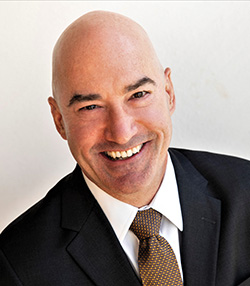FREE CONSULTATION: 214.522.9404

Do you need a Dallas hit-and-run lawyer?
Hit-and-run incidents are immensely stressful for victims. As well as the standard difficulties that always come with road accidents, there’s the added confusion and frustration of having the at-fault party flee the scene and potentially leave you to foot all the bills by yourself.
If you decide to work with Crain Brogdon, LLP, you’ll have access to a hit-and-run lawyer in Dallas with years of experience and an in-depth knowledge of Texas traffic laws. We’ll ensure that your rights are protected and do our best to win you justice.
What to Do After a Hit-and-Run Accident in Dallas
There are a few steps you can take to maximize your chances of recovering compensation after the at-fault party leaves the scene of your accident without sharing their details.
- Prioritize safety: Before anything else, ensure you are in a safe location, away from the flow of traffic if possible. If you’re injured, try not to move unless you’re in immediate danger. However, you should avoid removing your vehicle from the roadway until the police arrive, as they will document its position on the road to assist accident reconstruction efforts later.
- Contact the authorities: As soon as you’re sure you’re safe from further harm, contact emergency services to report the incident. Provide as much detail as you can remember about the fleeing vehicle.
- Document everything: Take photos of the accident scene, your vehicle, any injuries, and any other damages. Also, jot down details of the incident while it’s fresh in your mind, including the time, location, details of the perpetrator’s vehicle, details of their appearance if you managed to see any, and the direction in which they fled.
- Look for witnesses: If anyone saw the incident, collect their contact information and request that they stay around to provide a statement to police.
- Seek medical attention: If you don’t need to go the hospital directly after your crash, you should schedule an appointment with your primary care physician as soon as you can. Even if you feel perfectly healthy, you may be suffering from an injury (including a serious brain injury) that hasn’t shown any symptoms yet.
- Inform your insurance company: Notify your insurance provider about the incident as soon as possible. The company will be able to guide you on the next steps and what coverage might apply. However, you should avoid engaging in detailed conversations about how the accident happened or making any assertions about who might be at fault. Stick to the facts.
- Maintain records: Keep a file of all related documents, including medical records, repair bills, police reports, and any correspondence with insurance providers.
- Consult an attorney: Visiting Crain Brogdon, LLP for a free initial consultation as soon as possible after the collision will allow you to learn about your rights and the course of action you should follow to give yourself the best chance of securing compensation.
- Avoid direct negotiations: If the hit-and-run driver is located and contacts you directly, refrain from making statements or entering into negotiations. Refer them to your hit-and-run lawyer or insurance company.
Remember, the minutes, hours, and days directly after a crash are frequently crucial in the context of pursuing justice and recovering compensation later on. If you can remember to stay calm and take the appropriate steps, you’ll make things much easier for yourself.
What Constitutes a Hit-and-Run in Texas?
Texas law states that every party to a road accident that causes property damage or bodily injury must do certain things before leaving the place where the collision took place. The requirements are:
- You must provide your name, address, vehicle registration, driver’s license information, and insurance details to the other parties to the accident.
- Someone present must contact a police officer if there has been a serious injury or if it’s not possible to remove the affected vehicles from the roadway without assistance.
- You must render assistance to anyone present who has suffered an injury.
It’s important to note that these rules apply to all parties to a car accident, not just the individual who is apparently at fault. So, it’s not a valid defense for a hit-and-run driver to say they left the scene because they didn’t think they were responsible for what happened.
How Uninsured Motorist Coverage Can Help You
Texas is an at-fault state, which means the insurance company of the party responsible for causing an accident must cover all the compensation that arises from it. Of course, if the at-fault party happens to have been on the road without valid insurance, it will be very difficult to recover funds from them. Uninsured or underinsured motorist coverage allows you to recover compensation from your own policy in a case like this, and this applies to unsolved hit-and-run cases as well.
You should note that uninsured motorist coverage is not a legal requirement in Texas, as it is in other states. However, many policies do include it. You can check the extent of your coverage by researching your policy document or speaking with your insurer.
How Police Pursue Hit-and-Run Offenders
While your hit-and-run attorney will investigate the evidence related to your case, the job of actually tracking down a hit-and-run driver must fall to the police. There are a number of sources Texas police can turn to for potentially useful evidence, including:
- The scene of the crash: Police investigators and crash reconstruction experts can use physical evidence from a crash site to identify the make and model of a car.
- Eyewitness testimony: Witnesses can share crucial identifying information about the car (its registration, make and model, or the direction it traveled in, for example) or its driver.
- Dashcam footage: Industry statistics show that dashcams have exploded in popularity in recent years, and footage from the devices is frequently useful for investigators seeking to learn about serious traffic violations.
- CCTV footage: Like dashcams, CCTV cameras are getting more popular all the time. If your hit-and-run occurred in a built-up area, there’s a good chance a security camera captured it.
- Social media: Police departments often use their social media platforms to share details of an investigation so that the general public might be able to contribute useful information to it.
Is a Hit-and-Run a Felony or a Misdemeanor?
At Crain Brogdon, LLP, we focus on personal injury issues. That means we help our clients recover financial compensation from people or organizations who have caused them some form of harm; we don’t deal with criminal matters.
A hit-and-run is a criminal issue, and drivers who commit this type of offense deserve to have the criminal justice system assess their case; but this process takes place independently of any civil action you file against the driver who hit you.
The penalties for hit-and-run offenses are set out in Texas transportation codes. Generally, they are as follows:
- Misdemeanor: A hit-and-run is usually considered a Class C misdemeanor offense if it only results in property damage. Penalties for these offenses are fines of up to $500.
- Third-degree felony: If an accident results in any form of bodily injury, leaving the scene of the crash without handing over your information is a felony in Texas. Where the injury in question is not a serious bodily injury, the charge is usually a third-degree felony, which carries potential penalties of fines up to $10,000 and prison sentences of up to 10 years.
- Second-degree felony: This category applies to hit-and-run accidents that result in serious bodily injury. Penalties here can include fines of up to $10,000 and prison sentences of up to 20 years.
- First-degree felony: If a Texas hit-and-run results in someone’s death, it may be classed as a first-degree felony. A conviction on a charge like this can result in a sentence of life imprisonment and fines of up to $10,000.
There are certain aggravating factors that may make things worse for a defendant in this situation; for example, if they were driving under the influence of alcohol or drugs, or if they were speeding at the time of the crash. Hit-and-run drivers may also have their driver’s license revoked.
Frequently Asked Questions (FAQs)
Are bicyclists and pedestrians covered by the same rules as drivers in relation to hit-and-run accidents?
Yes, Texas hit-and-run laws protect all road users. If a driver flees after hitting you while you were walking or cycling, they have committed a hit-and-run offense. You may even be eligible for compensation under your own auto insurance policy if you have uninsured motorist coverage.
What if the hit-and-run occurred in a parking lot and I wasn’t present?
Parking lot hit-and-runs are common. If your car was damaged by another vehicle while parked and the responsible party didn’t leave a note, the situation will be treated like any other hit-and-run. Document the damage, see if there are witnesses or surveillance cameras, and file a report with the police and your insurance provider.
How does a hit-and-run affect my insurance premium?
The impact of a hit-and-run on the victim’s insurance premium varies based on the insurance company and policy details. In many cases, if you’re not at fault, your rates may not increase. This is not always the case, though; unlike other states, Texas does not have a law preventing insurers from increasing the premiums of hit-and-run victims.
Working With a Dallas Hit-and-Run Lawyer Who Will Stand Up for Your Rights
Hit-and-run incidents are always traumatic, and their legal implications can be complex. However, with the right legal guidance, you can navigate the aftermath with confidence.
At Crain Brogdon, LLP, your lawyer for hit-and-run accidents will be in your corner from the moment you come through our doors, providing the expertise and compassion you need. Contact us today to schedule your free initial consultation. You can reach us over the phone at (214) 522-9404 or via our online contact form.

Attorney Quentin Brogdon
Quentin Brogdon has over thirty years of experience and expertise in the field of personal injury trial law. He is board certified in both personal injury trial law and civil trial advocacy. Quentin has received an AV rating from Martindale-Hubbell, the highest possible rating. This rating reflects an attorney’s ethics and abilities according to reviews from fellow attorneys. [ Attorney Bio ]






